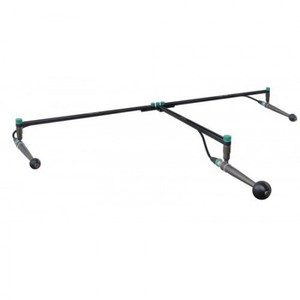- in Book Excerpt , Gear , Microphones , Recording by Bobby Owsinski
- |
- 1 comments
A Look At The Decca Tree Stereo Recording Technique
 Even if you never intend to record an ensemble larger than a standard rock, pop, or jazz rhythm section, a good grasp on the many techniques for stereo recording is essential and will come in handy sooner or later. One basic stereo technique is the spaced-pair, which is two identical mics placed several feet apart and aiming straight ahead toward the musical ensemble. The mics can have any polar pattern, but the omnidirectional pattern is usually used for this method. The greater the spacing between mics, the greater the stereo spread. A variation of the spaced pair is the Decca Tree, the standard for orchestral recording, comprised of a spaced pair with a center mic connected to a custom stand and suspended over the conductor.
Even if you never intend to record an ensemble larger than a standard rock, pop, or jazz rhythm section, a good grasp on the many techniques for stereo recording is essential and will come in handy sooner or later. One basic stereo technique is the spaced-pair, which is two identical mics placed several feet apart and aiming straight ahead toward the musical ensemble. The mics can have any polar pattern, but the omnidirectional pattern is usually used for this method. The greater the spacing between mics, the greater the stereo spread. A variation of the spaced pair is the Decca Tree, the standard for orchestral recording, comprised of a spaced pair with a center mic connected to a custom stand and suspended over the conductor.
Decca Records, who had a long tradition of developing experimental recording techniques including surround sound and proprietary recording equipment, developed the Decca Tree in 1950s as compromise between the purist stereo pair and multi-mic arrays for orchestral recording. Apart from individual engineer’s choice of mic, it remains largely unchanged to this day. It’s still in use in film scoring, classical orchestral, and opera recording, as it produces a very spacious stereo image with good localization.
The classic Decca Tree setup uses three Neumann M 50s arranged in a triangle 10 to 12 feet above the conductor’s position, although the spacing varies with venue and size of ensemble. The left mic is panned left, the right mic is panned right, and the center mic is panned to the center with additional mics (spot mics or sweeteners) used over the violins (usually panned to the left), cellos (usually panned to the right), harp and timps, and the soloist.
The distance between mics depends on the size of the ensemble. For an orchestra, the left and right mics are 8 to 10 feet apart, with the center about 6 to 7 feet in front of the left-right axis.
It’s a little-known fact that Decca has used mics other than the M 50 on the tree. In particular, Decca has used M 49s and KM 56s, but modern substitutions include the TLM 50, M 150, Brauner VM-1, or DPA 4003’s with APE spheres.
As stated in the beginning of the post, the Decca Tree is just a variation on spaced-pair stereo recording. Spaced-pair features:
- Off-center images are diffuse.
- Stereo spread tends to be exaggerated unless a third center mic is used.
- Provides a warm sense of ambience.
- Phasing problems are possible.
You can read more from The Recording Engineer’s Handbook and my other books on the excerpt section of bobbyowsinski.com.

